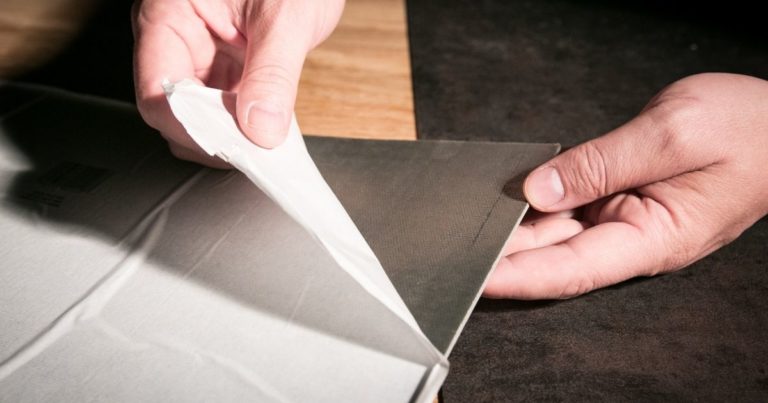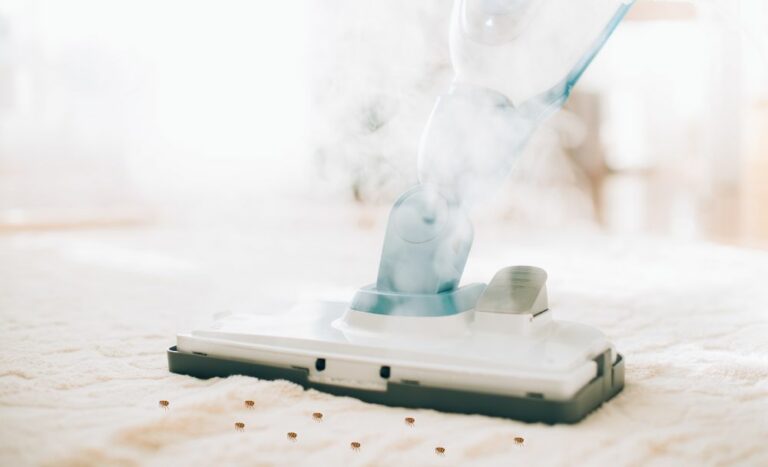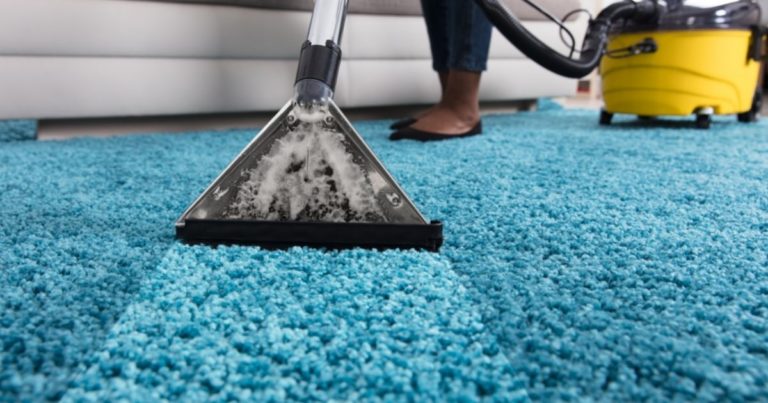Can You Put Vinegar in a Steam Mop?

You mop, you steam, you conquer grime—yet you wonder if you can clean and disinfect faster by adding vinegar to your steam mop. While you’re aiming for that extra sparkle on your floors, it’s essential to consider whether the acidic nature of vinegar meshes well with your steam mop’s design. Generally, it doesn’t.
Vinegar’s reputation as a natural disinfectant tempts you to pour it in, but hold on—your steam mop’s warranty and functionality could be at stake. In the next few paragraphs, I’ll guide you through the do’s and don’ts of using vinegar in your steam mop, ensuring you’re well-informed and your floors are flawlessly clean without any unintended consequences.
Let’s delve into the nitty-gritty of mixing high heat with this household staple.
Key Takeaways
- Putting vinegar in a steam mop can cause damage to the internal components and shorten its lifespan.
- Manufacturers, such as Shark Clean and Bissell, explicitly advise against using vinegar in their steam mops.
- Some online sources may provide incorrect advice about using vinegar in a steam mop.
- While some steam cleaners may recommend using vinegar for descaling, it should only be done during the maintenance and descaling with the cap open and the steam cleaner switched off.
As a long-time user and advocate of steam cleaners, I have seen my fair share of misguided advice online.
One of the most common misconceptions I’ve come across is the use of vinegar in steam mops.
I have contacted steam mop manufacturers and studied their user manuals to ensure I provide my readers with the most accurate and reliable information.
I want to share my findings, experiences, and insights on this topic today.
Can You Put Vinegar in a Steam Mop?
You should not put vinegar in a steam mop. The acidic nature of vinegar can corrode internal components, particularly seals and hoses, which may result in leaks or mechanical failures.
Manufacturers often design steam mops for use with water only, and deviating from these guidelines could void your warranty. This means you could be left without support or a replacement should your device malfunction from vinegar use.
Every steam mop on the market has a unique design, but they all operate on the same basic principle. Your steam mop uses electricity to heat water from its reservoir, turning it into steam.
This steam is then directed through a nozzle or pad onto the floor. The heat from the steam effectively loosens dirt and grime, allowing the mop pad to absorb and remove it from your floor’s surface.
You’ll want to make sure you’re using the right type of water—distilled or demineralized is best to prevent scale buildup. Always consult the user manual for specific instructions, and remember to replace the cleaning pads regularly to maintain optimal performance.
Vinegar’s Cleaning Power
While you shouldn’t add vinegar directly to your steam mop, it’s worth noting that vinegar’s natural acidity makes it a powerful ally in cutting through grease and grime on various surfaces when used appropriately. Here’s why vinegar can be so effective:
- Dissolves Buildup: It tackles mineral deposits and soap scum with ease.
- Deodorizes: Say goodbye to nasty odors as vinegar neutralizes them naturally.
- Eco-Friendly: With vinegar, you use a non-toxic cleaner, keeping your home chemical-free.
- Cost-Effective: It’s a budget-friendly option that’s likely already in your pantry.
Just remember, its strength lies in its proper application. Use it wisely, and vinegar is a formidable cleaning companion, just not inside your steam mop.
Can You Put Vinegar in a Shark Steam Mop?
Here is the official advice from Shark about using vinegar in their steam mops:
To prolong the life of your Steam Mop, we recommend using distilled water. Make sure you add only water to the tank. Chemicals or cleaning solutions (including vinegar) may damage the Steam Mop and could be unsafe for you and your family.
Shark S5003D User Manual
In contrast, here is some of the advice being given online from other blogs:

It gets better – here is another blogger talking about using bicarbonate soda (also known as baking soda) and vinegar together in a Shark steam mop – what a way to ruin your steamer!
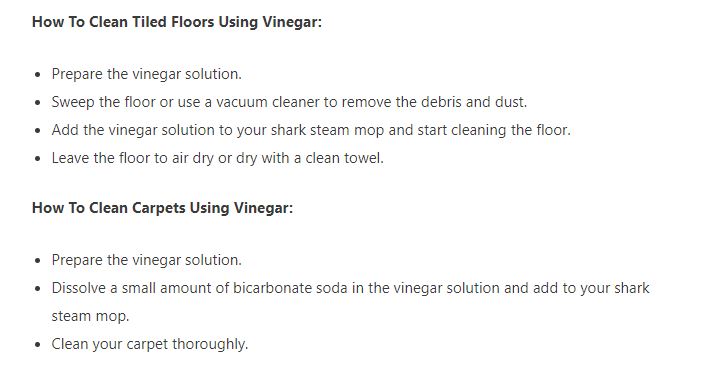
Anyone who has used baking soda and vinegar together should know it causes a chemical reaction.
Unless you want a mini volcano in your steam mop’s water tank and a clogged steamer from the soda, please follow our advice and don’t use vinegar or bicarbonate (baking) soda in your steam mop.
Shark also advises in two separate areas of their user manual not to use vinegar in their steam mops:
Can I put something other than water in the water tank of the Steam Mop?
DO NOT add cleaning solutions, scented perfumes, oils, or any other chemicals to the water used in this appliance, as this may damage the unit or make it unsafe for use. We recommend using distilled water in your Steam Mop.
Shark Clean Troubleshooting Guide
Can You Put Vinegar in a Bissell Steam Mop?
I’m certain Bissell will say the same thing as Shark Clean, but to provide accurate information, here is the formal advice from Bissell:
Do not use vinegar or any other solution as it could damage the water tank. Never put descaling, aromatic, alcoholic or detergent products into the steam cleaner, as this may damage it or make it unsafe for use.
Bissell
Here is yet another so-called expert talking about using vinegar in a Bissell steam mop:

They’re not wrong. Vinegar can damage the hardwood. According to Bissell, it can also damage your steam mop water tank.
So, take Bissell’s advice and don’t use vinegar in your steam mop.
Can You Put Vinegar in a Steam Cleaner?
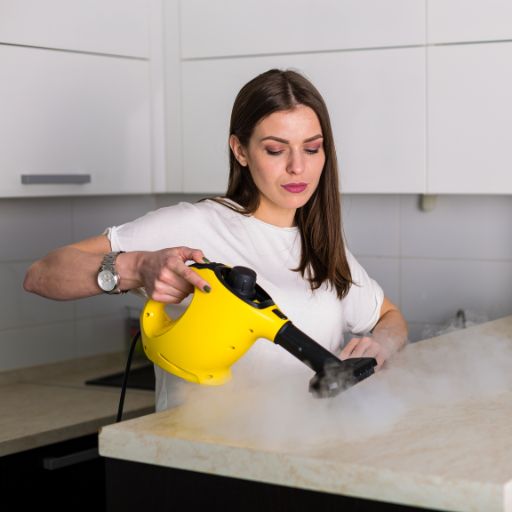
Canister style steam cleaners heat the entire boiler of water. Steam mop manufacturers often suggest using vinegar to descale canister steam cleaners.
But this happens when the steamer has cooled down – the vinegar soaks for anywhere from 40 minutes to a few hours, or sometimes overnight, before being rinsed out and flushed with clean water.
In my years of steam cleaning, I have never heated the boiler tank with vinegar inside.
But to continue providing accurate information to my readers, I consulted with Kaercher, Dupray, McCulloch, and Warner for official advice.
Here’s what they had to say:
Kaercher Steam Cleaners
Kaercher advised not to use vinegar in their steam cleaners, specifically:
Do not fill with any cleaning agents or other supplements. Do not use vinegar or similar agents.
Kaercher Steam Cleaners
Dupray Steam Cleaners
Dupray advises only using vinegar in their steam cleaners during maintenance and descaling.
During this time, the cap on the boiler tank should remain open, and the steam cleaner should be switched off.
Regarding filling the boiler tank of the steamer, Dupray advises that adding anything other than water to the boiler tank will void the warranty. The official wording of the warranty is:
THE WARRANTY IS VOID: …if the product was used with other substances besides water in the water chamber;
Dupray
I think it’s safe to say you should not put vinegar in a Dupray steam cleaner.
McCulloch Steam Cleaners
McCulloch is another popular brand of steam cleaners that recommends those who use tap water should do a monthly descale of their canister steam cleaners using vinegar.
Like Dupray, the vinegar should be added to a cooled steamer, which must always remain off. The boiler tank should be rinsed several times to remove vinegar residue before operating the steamer.
The official advice from McCulloch regarding adding vinegar to the boiler tank when steam mopping is:
When filling, only water should be used in unit – other cleaning agents could damage unit or cause injury. Distilled or de-mineralized water is highly recommended, in order to minimize potential build-up of mineral deposits.
McCulloch Steam Cleaners
Wagner Steam Cleaners
Wagner makes a versatile steamer with an included affordable wallpaper attachment.
Their advice on putting vinegar into their steam-cleaning machines was pretty simple:
Only use distilled water, mineral build-up from tap water can shorten the life of the steamer.
Wagner SPRAYTECH
Whilst they don’t make mention of not using vinegar in the water tank, their warranty for both the steam cleaner and wallpaper steamer states:
“This Warranty Does Not Cover Damage Resulting From Improper Use, Accidents, User’s Negligence Or Normal Wear”
Given Wagner recommends using only distilled water in the steam cleaner, using vinegar may be considered improper use.
How to Use Vinegar With Steam Mopping
I understand that some people love the cleaning power of vinegar and may be disappointed by the advice not to put vinegar in your steam mop or cleaner.
There are alternative ways to incorporate vinegar into your cleaning routine without jeopardizing your steam mop.
For instance, you can create a simple cleaning solution by mixing equal parts of water and vinegar in a spray bottle.
Spray this solution onto your floors, then use your steam mop to cover the area. This way, you combine the cleaning power of vinegar and steam without damaging your machine.
Avoid Vinegar on These Flooring Types
Vinegar can cause damage to different types of floors. Some of the flooring types you should never clean with vinegar include:
- Hardwood floors – vinegar can break down the coating, causing dulling of the floor
- Marble or stone – vinegar can cause pitting within the flooring
- Waxed or unsealed flooring – the vinegar will strip away the wax, dulling the floor.
Frequently Asked Questions About Using Vinegar in a Steam Mop
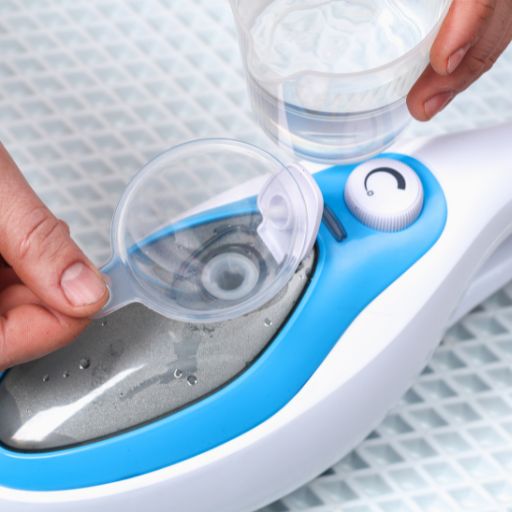
Here are the most asked questions regarding using vinegar in a steam mop and their answers.
Can I Put Vinegar in My Shark Steam Mop?
Vinegar should never be used in a Shark steam mop. Shark Clean specifically states chemicals or cleaning solutions (including vinegar) may damage the steam mop and be unsafe for you and your family.
Can I Use Vinegar in My Bissell Steam Mop?
Do not use vinegar in your Bissell steam mop. Bissell states that vinegar could damage the water tank.
How Much Vinegar Should I Put in My Steam Mop?
You should not put any vinegar in your steam mop. Only fill the tank with water, preferably distilled or demineralized water.
What Should I Put in My Steam Mop?
Distilled or demineralized water are the two best choices for your steam mop. If you prefer a fragrance while cleaning, choose a scented demineralized water such as Steam&Go Steam Mop Water .
Can I Add Bleach to My Steam Mop?
Bleach is a hazardous chemical that will destroy your steam mop’s plastic components. It will leave fumes in your house which are potentially toxic, particularly when combined with the heat of steam. Never add bleach to your steam mop.
Can I Add a Cleaning Solution to a Steam Mop?
Steam mops are not designed to work with cleaning solutions. They generate high-temperature steam to eliminate bacteria and clean surfaces naturally.
You should not add cleaning solutions to your steam mop unless specifically designed for steam cleaners or have a steam cleaner with a separate detergent tank.
Can You Put Vinegar in a Steam Mop? The Final Verdict
While vinegar is a fantastic natural cleaning agent, it is unsuitable for steam mops.
By following the recommendations of steam mop manufacturers and using distilled or demineralized water in your steam mop, you can enjoy a clean and fresh home without risking damage to your cleaning equipment.
Save vinegar for descaling your steamer, and use distilled water in your steam mop instead. You’ll enjoy the fresh smell of clean steam, and your home won’t stink like vinegar!
- Can You Use a Steam Mop On Karndean Flooring? - June 19, 2024
- How To Clean Unsealed Concrete Floors - June 7, 2024
- How to Clean Stamped Concrete - June 7, 2024



